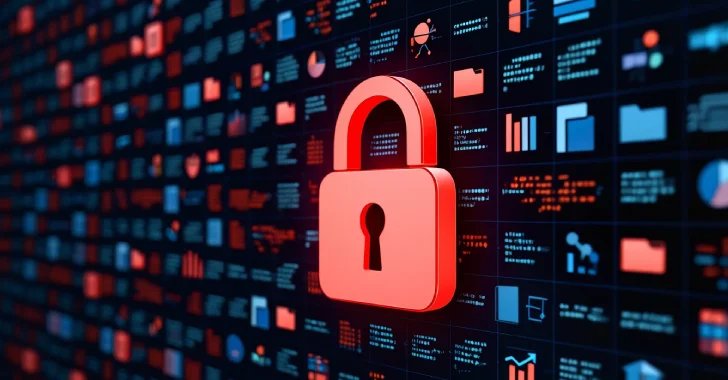Essential Insights
-
Emergence of Skitnet: Skitnet, a multi-stage malware developed by LARVA-306, has been actively used by ransomware actors since early 2025 for post-exploitation data theft and remote control of compromised systems.
-
Technical Features: Utilizing programming languages like Rust and Nim, Skitnet evades detection through techniques like dynamic API resolution and DNS-based communication, making it difficult for security measures to identify its activities.
-
Functionality: Key PowerShell commands embedded in Skitnet include mechanisms for persistence (through startup shortcuts), remote access (via AnyDesk), and execution of external scripts, enhancing its operational versatility.
- Related Threats: Alongside Skitnet, the TransferLoader malware is reported as a significant threat, targeting organizations like law firms and employing complex strategies including a decentralized command-and-control framework, reinforcing the evolving landscape of cyber threats.
What’s the Problem?
In May 2025, cybersecurity firm PRODAFT reported the emergence of a sophisticated malware named Skitnet, actively utilized by various ransomware operators to infiltrate systems, exfiltrate sensitive data, and establish remote control over affected devices. First marketed in April 2024 on underground forums, Skitnet—also known as Bossnet—was designed by an unknown threat actor identified as LARVA-306. Its capabilities include stealth features that communicate over DNS, making it adept at evading detection while allowing perpetrators to perform a range of malicious activities, from capturing screenshots to deploying remote access software.
The rise of Skitnet coincides with the deployment of another malware, TransferLoader, which has been targeting an American law firm. This troubling trend underscores the escalating complexity of cyber threats, where attackers increasingly leverage multi-stage malware frameworks and advanced programming techniques to execute their nefarious agendas. Reports from PRODAFT and Zscaler ThreatLabz illuminate the alarming rise of such sophisticated tools in the cybercriminal ecosystem, raising concerns about the security of enterprises and sensitive information in the digital age.
Security Implications
The emergence of Skitnet, a sophisticated multi-stage malware, poses significant risks not just to its immediate victims, but also to a broader ecosystem of businesses, users, and organizations that may be indirectly affected. As ransomware actors leverage this tool to compromise enterprise environments, the potential for widespread disruptions heightens, especially in sectors reliant on interconnected systems. The stealth capabilities of Skitnet enable it to evade traditional security protocols, facilitating data exfiltration and unauthorized remote access, which can lead to cascading failures in operational integrity, financial loss, and reputational damage across affected industries. Furthermore, as organizations grapple with the fallout from such breaches, the trust and confidence of users could diminish, potentially stifling collaboration, innovation, and the overall economic climate as firms navigate not only the immediate crisis but also the challenge of restoring cybersecurity resilience in an increasingly perilous digital landscape.
Possible Next Steps
In an era where cyber threats constantly evolve, understanding the intricacies of malware such as Skitnet, utilized by ransomware gangs for covert data exfiltration and persistent remote access, is vital for safeguarding organizational assets.
Appropriate Mitigation and Remediation Steps:
- Regular Updates: Ensure that all software and systems are consistently updated to patch vulnerabilities.
- Intrusion Detection: Implement advanced intrusion detection systems to identify suspicious activities early.
- User Training: Conduct ongoing cybersecurity training for all employees, covering social engineering tactics commonly used by attackers.
- Network Segmentation: Limit the access of critical data through effective network segmentation to reduce the impact of breaches.
- Data Backups: Maintain regular, secure backups of critical data to enable swift restoration in case of an attack.
- Incident Response Plan: Develop and regularly test a comprehensive incident response plan that includes specific protocols for ransomware incidents.
- Anti-malware Tools: Deploy robust anti-malware solutions capable of detecting and neutralizing advanced threats, including behavioral analysis features.
NIST CSF Guidance:
The NIST Cybersecurity Framework (CSF) emphasizes the importance of identifying vulnerabilities, protecting critical assets, detecting threats, and responding effectively to incidents. For more detailed recommendations and guidance regarding ransomware and malware, refer to NIST Special Publication (SP) 800-61, which focuses on Incident Handling, and SP 800-53, which outlines security and privacy controls.
Stay Ahead in Cybersecurity
Discover cutting-edge developments in Emerging Tech and industry Insights.
Learn more about global cybersecurity standards through the NIST Cybersecurity Framework.
Disclaimer: The information provided may not always be accurate or up to date. Please do your own research, as the cybersecurity landscape evolves rapidly. Intended for secondary references purposes only.
Cyberattacks-V1

